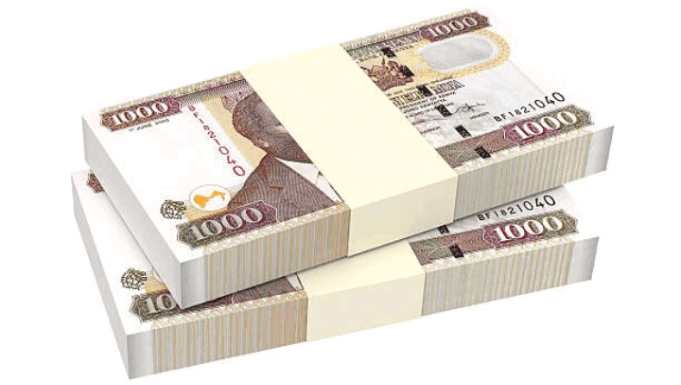The Kenyan Shilling (Swahili: shilingi; sign: KSh; code: KES) is the official currency of the Republic of Kenya and one of the most recognized units of exchange in East Africa. It is represented by the symbol KSh, the Kenyan Shilling plays a crucial role in the nation’s economy and regional trade. It is divided into 100 cents, and its stability and liquidity make it a preferred currency even beyond Kenya’s borders.
Kenya Shilling was introduced in 1966, replacing the East African Shilling, marking a new chapter in Kenya’s post-independence financial sovereignty. Over the decades, it has evolved to reflect the country’s growth, challenges, and reforms. Today, the currency is not only a medium of exchange but also a symbol of Kenya’s national identity and economic resilience.
Overview of the Kenyan Shilling
The Kenyan Shilling is issued and regulated by the Central Bank of Kenya (CBK), which maintains its value through monetary policy, interest rate controls, and exchange rate management. The shilling’s exchange rate is determined by market forces under a floating exchange rate system, allowing it to adjust based on demand and supply in global forex markets.
Kenya’s currency structure includes coins and banknotes of various denominations to facilitate transactions at every economic level — from small daily purchases in local markets to large commercial and international trade transactions.
Key Details
| Feature | Description |
| Currency Name | Kenyan Shilling |
| Currency Code | KES |
| Symbol | KSh or /= |
| Subunit | 1 Shilling = 100 Cents |
| Issuing Authority | Central Bank of Kenya |
| Currency Type | Fiat Money |
| Exchange Rate System | Floating |
| Common Banknotes | 50, 100, 200, 500, 1000 KSh |
| Common Coins | 1, 5, 10, 20 KSh |
History of the Kenyan Shilling
The East African Shilling Era
Before independence, Kenya was part of the East African Currency Board (EACB), which issued the East African Shilling. This currency circulated in Kenya, Uganda, Tanganyika (now part of Tanzania), and Zanzibar. The EACB was based in London and primarily served British colonial interests, linking the shilling’s value to the British pound.
Introduction of the Kenyan Shilling in 1966
After gaining independence in 1963, Kenya sought monetary sovereignty. On September 14, 1966, the Central Bank of Kenya introduced the Kenyan Shilling, replacing the East African Shilling at par value (1:1). This transition established Kenya’s independent monetary policy and allowed the country to tailor financial strategies to its economic priorities.
Early Banknotes and Coins
The first series of banknotes and coins featured images of Kenya’s first President, Jomo Kenyatta, along with national emblems and landscapes. These designs reinforced national pride and identity during the early years of independence.
Subsequent series introduced in the 1980s and 1990s included portraits of Daniel arap Moi, Kenya’s second president. However, in line with the 2010 Constitution, Kenya later banned the depiction of individual portraits on currency, promoting inclusivity and unity.
The 2019 Currency Redesign
In 2019, the Central Bank of Kenya unveiled new banknotes and coins featuring images representing Kenya’s rich culture, wildlife, and national landmarks — such as elephants, lions, and Mount Kenya. This move symbolized transparency, modernization, and national pride while complying with constitutional requirements.
The Role of the Central Bank of Kenya (CBK)
The Central Bank of Kenya serves as the issuer and regulator of the Kenyan Shilling. It is responsible for maintaining price stability, controlling inflation, and supporting economic growth.
Monetary Policy and Stability
The CBK uses monetary tools such as open market operations, interest rate adjustments, and foreign exchange reserves to maintain the shilling’s stability. Its Monetary Policy Committee (MPC) meets regularly to review economic conditions and decide on policies that align with national objectives.
Exchange Rate Management
While the Kenyan Shilling floats freely, the CBK may intervene in the foreign exchange market when excessive volatility threatens economic stability. These interventions aim to prevent sharp depreciation or speculative attacks that could destabilize markets.
Inflation Control
Maintaining low inflation is vital to preserving the purchasing power of the Kenyan Shilling. The CBK’s target inflation rate typically ranges between 2.5% and 7.5%, ensuring price predictability and consumer confidence.
Structure of the Kenyan Currency System
Banknotes


The most frequently used denominations are 50, 100, 200, 500, and 1000 shillings. Each note carries imagery reflecting Kenya’s heritage and development — such as agriculture, infrastructure, and natural landscapes.
Design Themes
- 50 Shillings: Depicts green energy and agriculture
- 100 Shillings: Highlights Kenya’s rich culture and social life
- 200 Shillings: Represents education and technology
- 500 Shillings: Features tourism and wildlife
- 1000 Shillings: Showcases governance and national unity
Coins
Coins are available in denominations of 1, 5, 10, and 20 shillings. Modern coins feature metallic bimetallic designs, ensuring durability and distinct recognition. They circulate widely for small-scale transactions, such as transportation fares and market purchases.
The Value and Exchange Rate of the Kenyan Shilling
Exchange Rate History
Since its introduction, the Kenyan Shilling has undergone periods of both strength and depreciation, reflecting shifts in global and local economic conditions.
- 1970s–1980s: The shilling was relatively strong due to a controlled exchange system and favorable trade terms.
- 1990s: Liberalization led to market-determined rates, resulting in volatility.
- 2000s: Kenya maintained moderate inflation and steady growth, stabilizing the shilling.
- 2010s: Rising public debt and global shocks led to gradual weakening against the U.S. dollar.
- 2020–2024: The COVID-19 pandemic, global inflation, and interest rate changes impacted KES performance, leading to periodic depreciation.
Factors Affecting Exchange Rates
There are several factors influence the value of the Kenyan Shilling in global forex markets:
- Trade Balance: A large import bill versus exports increases demand for foreign currencies, weakening the shilling.
- Foreign Investment: Inflows strengthen the shilling; outflows weaken it.
- Public Debt: High external debt increases vulnerability to currency depreciation.
- Interest Rates: Higher domestic rates attract investors seeking better returns.
- Inflation: Low inflation supports currency stability.
- Political Stability: Investor confidence rises with stable governance.
Comparison with Regional Currencies
The Kenyan Shilling is one of East Africa’s most stable currencies, often outperforming the Ugandan Shilling (UGX) and Tanzanian Shilling (TZS) in liquidity and international recognition. In neighboring countries like Somalia and South Sudan, the KSh sometimes circulates informally due to its perceived stability.
The Kenyan Shilling in the Global Economy
Forex Market Presence
The KES is actively traded in global forex markets, particularly against the U.S. dollar (USD), British pound (GBP), and Euro (EUR). It serves as a regional benchmark currency for East African forex traders and businesses.
Use in Cross-Border Trade
Kenya’s economic ties with Uganda, Tanzania, Ethiopia, and Somalia make the Kenyan Shilling important in cross-border trade. Traders in border towns frequently accept KES for goods and services due to its relative stability and convertibility.
Remittances and Diaspora Impact
Remittances from Kenyans abroad are a key driver of forex inflows, helping stabilize the currency. In 2024, remittances exceeded $4 billion, making them a vital source of foreign exchange reserves.
Inflation and Purchasing Power
Historical Inflation Trends
Kenya’s inflation has fluctuated over time due to changes in fuel prices, food supply, and monetary policies. However, the CBK’s consistent policy interventions have kept inflation within manageable levels, supporting consumer spending power.
Effects of Inflation on the Shilling
High inflation erodes the purchasing power of the Kenyan Shilling, increasing the cost of living. This affects businesses, savings, and investments. Conversely, moderate inflation supports growth by encouraging spending and investment.
Modern Challenges and Reforms
Currency Counterfeiting
In response to rising cases of counterfeiting, especially of the 1000-shilling note, the 2019 redesign introduced enhanced security features such as:
- Watermarks of animals
- Holographic security strips
- Raised print and tactile marks for the visually impaired
Digital Payments and the Shilling’s Evolution
Kenya’s financial landscape has been transformed by mobile money platforms like M-Pesa, which allow transactions in shillings via mobile phones. These systems have increased financial inclusion, making the shilling more accessible to millions of Kenyans without traditional bank accounts.
External Debt and Currency Pressure
Kenya’s growing external debt remains a challenge for the shilling’s stability. Debt servicing in foreign currencies raises demand for USD, often weakening the KES. The CBK closely monitors these pressures to prevent sharp currency declines.
The Future of the Kenyan Shilling
Strengthening Monetary Policy
Future stability of the Kenyan Shilling depends on disciplined fiscal policy, reduced debt reliance, and diversified exports. The CBK aims to maintain a market-driven exchange rate while ensuring price stability.
Regional Integration and Trade
Kenya’s participation in the East African Community (EAC) and the African Continental Free Trade Area (AfCFTA) could increase demand for the shilling through regional trade growth. There are ongoing discussions about a single East African currency, which may influence the long-term outlook of the KES.
Digital Currency Potential
The CBK has also been exploring the concept of a Central Bank Digital Currency (CBDC) — a digital version of the Kenyan Shilling. This could enhance transaction efficiency, reduce costs, and strengthen Kenya’s position as a fintech leader in Africa.
Key Takeaways
- The Kenyan Shilling (KES) is the national currency of Kenya, introduced in 1966 to replace the East African Shilling.
- It is divided into 100 cents and symbolized as KSh.
- The Central Bank of Kenya manages issuance, monetary policy, and exchange stability.
- Kenya’s economy benefits from a floating exchange rate system, which reflects global market conditions.
- The shilling’s stability has made it one of East Africa’s most trusted currencies.
- Future strength depends on prudent fiscal management, export diversification, and digital transformation.
Conclusion
The Kenyan Shilling represents more than money — it reflects Kenya’s economic journey, resilience, and innovation. From its birth in 1966 to the modern digital era, the KES has adapted to new challenges while maintaining its central role in trade and financial systems.
As Kenya continues to grow and embrace technology, the future of the Kenyan Shilling remains promising. It stands as a symbol of independence, progress, and confidence in the nation’s financial future.
